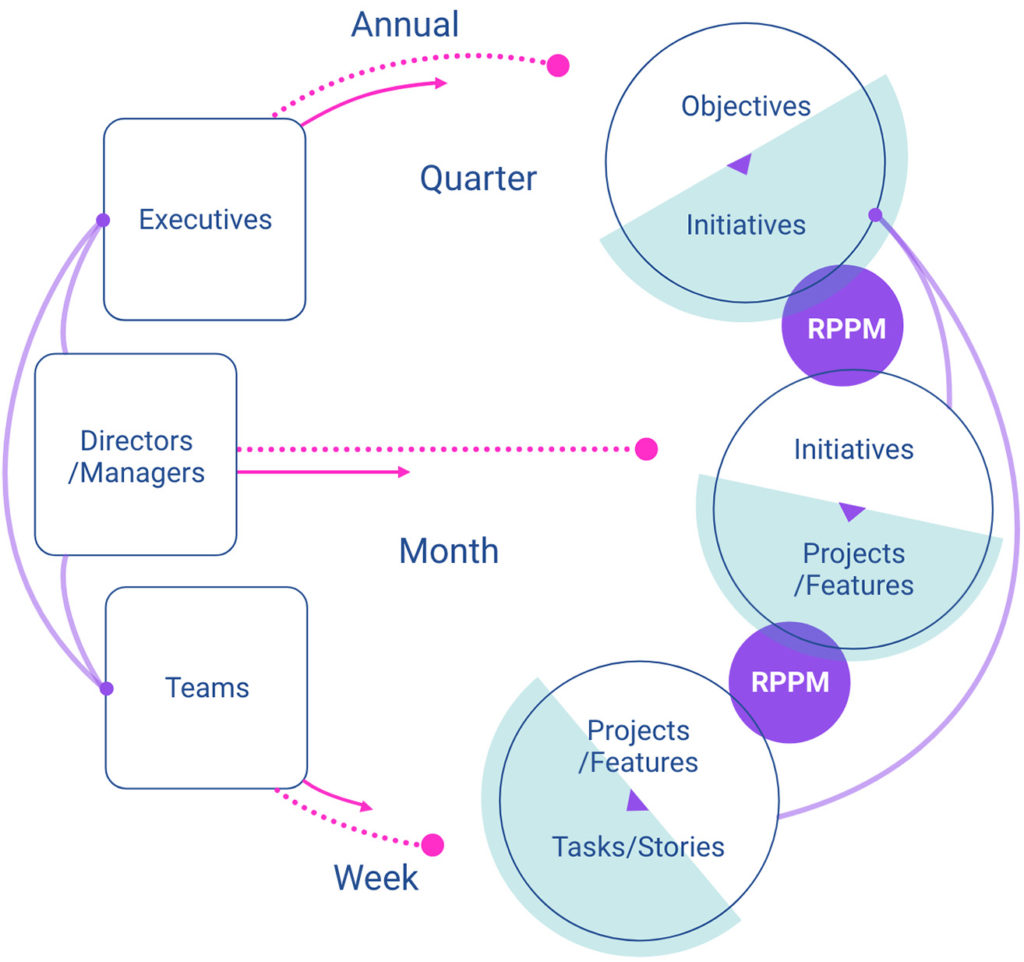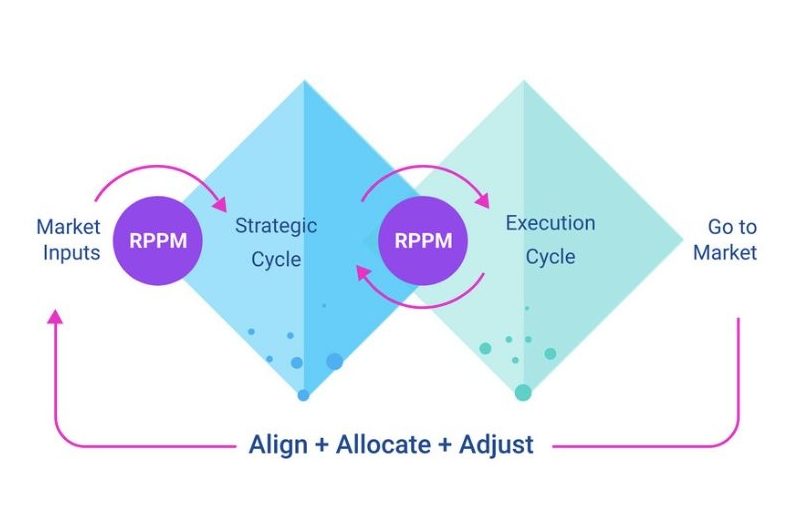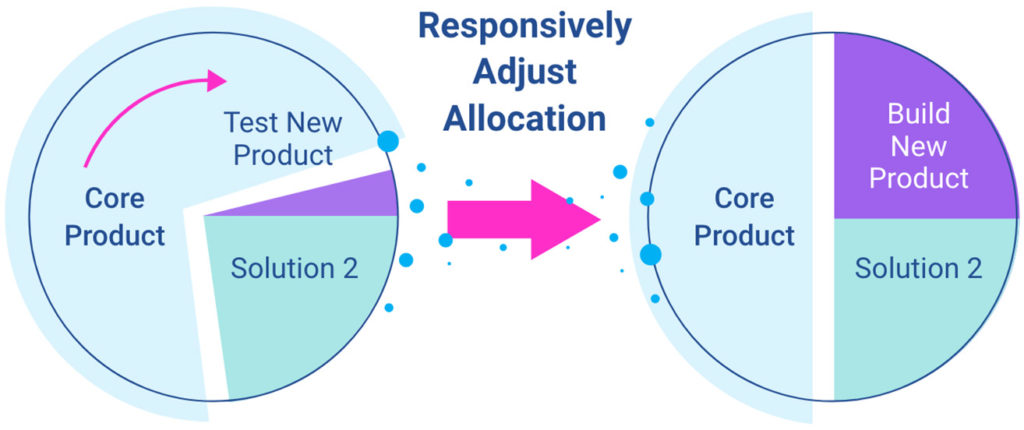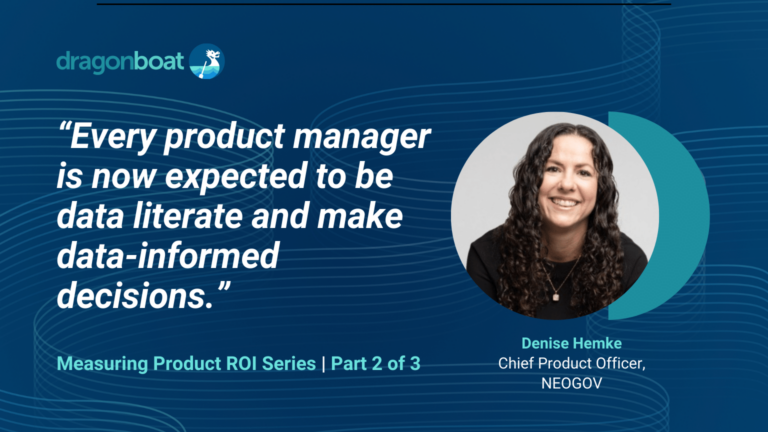“Can you remind me why Automated Reports has a much higher score than App Market Redesign? We spent quite a few days creating the formula and scoring all the items, but we don’t have anything for the partner team,” the Head of Product whispered to the Product Operations Manager in their stakeholder roadmap review meeting.
In the room, the channel partner lead was frustrated, “I shared my business plan with you all last quarter. And in our last executive offsite, we all agreed that increasing our partnership distribution is a top goal for all of us. But there is nothing on this roadmap.”
When the goals were first set and communicated, everyone agreed. But when the product teams started prioritizing the roadmap, goals were in a completely different realm.
Sound familiar?
80% of product teams struggle with competing priorities
97% of companies fail to scale due to silo and misalignment
The root causes?
- A linear, fixed-prioritization framework does not directly correlate to the evolving objectives.
- Disconnected or tangled strategies and executions build the wrong thing fast.
- Siloed teams lacking effective product operations create incongruent product experiences.
- Haphazard road-mapping leads to incrementalism or half-finished products.
Winning teams adopt a Responsive Portfolio Management approach to dynamically connect strategy and execution.
What is Responsive PPM?
Responsive PPM is short for “Responsive Product Portfolio Management.” It connects objectives, products, and resources with execution, and it responsively adapts to the state of the organization and the market.
Responsive PPM has 5 Key Principles
- Multi-dimensional product portfolios
- Three Operating Horizons
- The Double-diamond of strategy and execution workflow
- MoAR replacing ROI to assess opportunities
- Responsive Portfolio Adjustment (Re/balance)
1. The Multidimensional Portfolio
A product portfolio can undoubtedly be viewed and assessed in multiple dimensions. The customer dimension reflects the type of customers, such as enterprise, SMB, or domestic, EU, LATAM, etc. Additionally, the customer dimension often relates to terms like solutions and use cases for seemly the same product. The objective dimension reflects the type of goals the product portfolio desires to achieve, for example, growing new customers, retaining existing customers, innovation, etc.
2. Three Operating Horizons

Subsequently, every organization has long-term, mid-term, and near-term focuses and activities, corresponding to the levels of operations. Thus, the focus found at a higher level provides the guideline for alignment to the next level down. The operating rhythm, such as annual planning, quarterly planning or quarterly alignment, and sprint planning, ensue.
The key here is not having an annual, quarterly, or weekly event, but rather a rolling time horizon looking out to annual, quarterly, or bi-weekly goals. The details of the next level become fuzzier further into the future.
This allows the organization to be responsive while still rowing in the same direction.
3. Double Diamond Strategy and Execution Cycles

- The portfolio roadmap process has two distinct and interconnected phases: the strategic cycle and execution cycle.
- In addition, each cycle focuses on a different time horizon at the same operating level (see diagram above).
- For instance, the strategic cycle has its own inner cycle of defining objectives, evaluating opportunities, and assessing resource allocation.
- The outputs of strategic cycle becomes the goal for the execution cycle.
- Learn more about double diamond strategic planning and execution.
4. Use MoAR, instead of ROI, for Prioritization

Responsive PPM uses MoAR instead of ROI to evaluate Cost vs. Benefit.
- MoAR stands for Metrics over Available Resources.
- For an outcome-focused portfolio, metrics such as “Grow users by 5% in Q2” are more immediately measurable than dollar-based benefits such as a “gain a return of $1 million for feature A in 1 year.”
- Similarly, available resources are more immediate than a dollar investment to evaluate opportunity cost.
- Consequently, making the cost and benefits more immediately measurable allows for faster and better product decisions.
- Learn more about MoAR.
5. Responsive Re/Allocation

- Traditional portfolio management allocates budget to products or projects and assumes the definition of projects ahead of execution.
- Responsive portfolio management allocates multi-dimensionally e.g. towards objectives, customer segments. This provides autonomy in the execution cycle to empower innovation and faster decisions.
- Periodically, based on the level of operating cadence (#2 above), the allocation may be adjusted to ensure the best overall results.
Every organization, even with only one product, is running a product portfolio – a multidimensional portfolio. It’s no wonder that winning organizations like PayPal, Spotify, Amazon, and Apple, adopt the Responsive Portfolio Approach (Responsive PPM) to connect OKRs and Agile for top-down alignment and bottom-up innovation.





